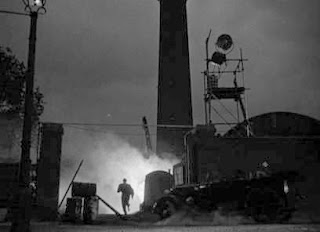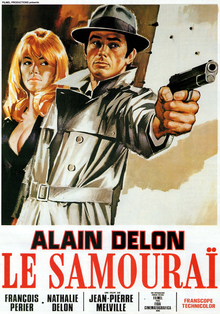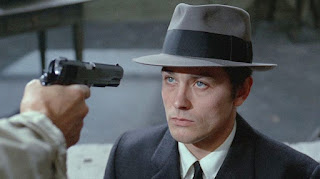Directed by Robert Siodmak; produced by Sol C Siegel
When cop-killer Martin Rome (Richard Conte) barely survives a shooting, Lieutenant Candella (Victor Mature), who knows Rome from the old neighbourhood, is convinced the criminal is responsible for another brutal robbery and murder. Conviction may depend on finding the elusive Teena Riconti (Debra Paget). But those who are guilty of the robbery also want to find the girl, as leverage to force Rome to confess to their crimes. When Rome escapes custody, Candella must re-capture him before either he or his rivals locate Teena.
A fairly complex story complements excellent direction and acting in this film noir of two strong characters each with a great effect on those around them. The script allows for plenty of development, not in Candella and Rome’s personalities, but in what we see of them.
In many movies, the characters change with events; in Cry of the City, they remain constant, but we get to see what they are really like as the story unfolds. Rome seems a likeable guy, jaunty in his illegal activities and friendly; Candella comes across as dour and humourless, weighed down by his profession. How the audience sees them at the movie’s start and at its end may be quite different.
The acting matches the story. Mature famously put himself down as an actor and, indeed, some critics agreed with his own assessment. It may have been because he did not view acting as the life-and-death struggle that many in his line did. Whether he took it seriously or not away from a movie’s set is immaterial; in front of the camera, he did good work, and the example he provides in Cry of the City is a very good one. Conti is largely forgotten now, I think, but he is very persuasive as the smooth career crook.
Equally convincing are the supporting players, especially Shelley Winters as a former girlfriend of Rome’s, roped in to help him one more time, and Betty Garde, as a nurse, emotionally seduced by the killer. But credit goes most to Hope Emerson as a masseuse whose blandly expressed evil is truly scary and who deserves to be remembered as a great screen villainess, especially considering the small amount of time she is allotted in the movie.
Minor characters, most inhabiting the dirty, twilight world of semi-crime and corruption: an attorney who defines the term ‘criminal lawyer’, an unlicensed doctor, a bullying prison warder, a simple-minded convict. They are all played convincingly by the actors.
Robert Siodmak had a string of solid crime drama hits in the late 1940s. Cry of the City doesn’t have the starkness and fatality of The Killers, but to make up for this, it has atmosphere and setting. There are some good location shots, showing less seen parts of New York, such as industrial/retail neighbourhoods propping up the elevated train lines, and neon-lit streets at night.
Cry of the City is a movie in which everyone involved is at his best, one of the foremost products of the decade of the film noir.








































